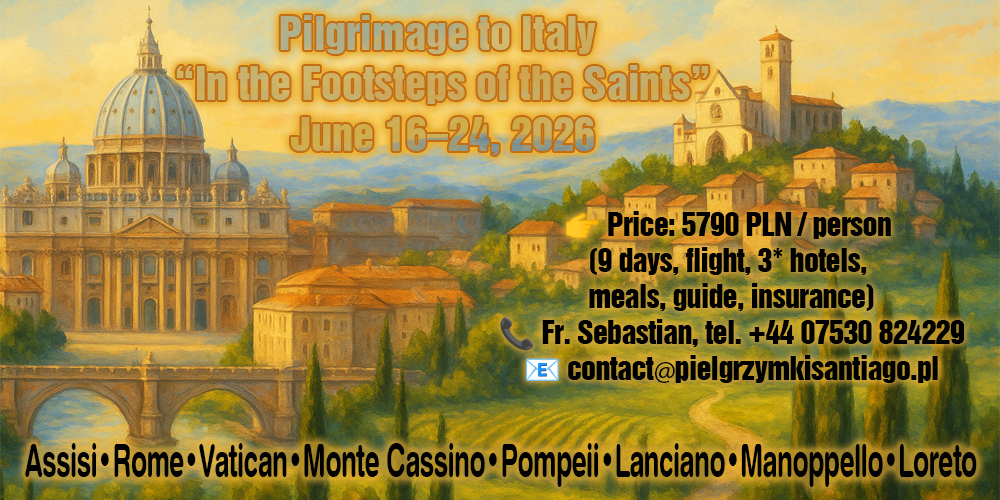In Polish and European Christian iconography, it’s not unusual to encounter a saint depicted with a book pierced by a sword. This isn’t a random motif—it’s deeply rooted in theology, tradition, and biblical imagery. While Scripture itself doesn’t describe saints with such precise attributes, both the Old and New Testaments provide a rich foundation for understanding this symbol. Before looking at historical examples and pastoral practice, let’s examine the biblical and doctrinal basis for the motif.
Biblical Foundation: The Word as Sword
The author of Hebrews wrote:
“For the word of God is living and active, sharper than any two-edged sword, piercing to the division of soul and spirit, of joints and marrow, and discerning the thoughts and intentions of the heart.” (Hebrews 4:12)
This passage is key to understanding the role of Scripture in the life of believers—not as a static book, but as a living, dynamic instrument of God’s action. The sword piercing the book symbolizes that God’s Word not only informs but also divides, judges, and cleanses. It’s a tool of spiritual surgery—precise, sometimes painful, always purposeful.
In Revelation, the motif takes on an eschatological dimension:
“From his mouth comes a sharp sword with which to strike down the nations.” (Revelation 19:15)
Here, the sword proceeding from Christ’s mouth is His Word—a tool of judgment and salvation. The symbol of the book and sword finds its ultimate expression in Christ Himself, who is both the Incarnate Word and the Righteous Judge.
Paul also writes:
“And take the helmet of salvation, and the sword of the Spirit, which is the word of God.” (Ephesians 6:17)
Here the sword is entrusted not only to Christ but to believers as well—we are not just recipients of the Word’s sharpness, but also called to wield it.
Even in the Old Testament, the messianic prophecy in Isaiah describes the Servant’s mouth as “a sharp sword” (Isaiah 49:2). The symbolic language of the sword and the Word runs through the entirety of revelation.
Doctrinal Development: The Image as Theology
Based on this biblical foundation, the doctrine developed that sacred art is more than mere decoration—it is visual theology, pictorial catechesis that embodies scriptural truths. The Reformers, particularly within Protestantism, emphasized that images are not objects of worship but can serve as valuable tools for teaching and catechesis.
The symbol of a book pierced by a sword—most commonly associated with St. Paul—refers directly to his role as the teacher of nations, the tireless proclaimer of the Gospel, whose word “pierced” the hearts of his listeners. At the same time, it reminds us that contact with God’s truth is not always comfortable—an authentic encounter with the Word demands transformation, sometimes even pain.
As Augustine put it:
“The Scriptures are our letters patent from heaven, sealed with the blood of Christ and signed by the Holy Ghost.”
Here, Christ is the One whose Word acts with sovereign power—whether converting, judging, healing, or dividing.
It’s often alleged that such images violate the Second Commandment. Reformed theology, however, carefully distinguishes didactic art from idolatry. Calvin wrote:
“Since sculpture and painting are gifts of God, what I insist upon is that both shall be used purely and lawfully—that gifts which the Lord has bestowed upon us, by employing which we dishonor him, may not become occasions of shame and reproach.”
The image isn’t an end in itself, but a tool pointing the mind beyond itself—to spiritual realities.
The deepest implication of this doctrine is that visual symbols, rightly used, shape the imagination according to Scripture: we learn to see the world through the lens of Revelation, not just culture or fashion.
The Saint with a Book and Sword – Who Is Depicted?
In Western tradition, the saint most commonly shown with a book pierced by a sword is St. Paul the Apostle. The sword is not only a symbol of his martyrdom (Paul was beheaded) but also of the dynamic, effective Word he proclaimed. The book refers to his epistles—the foundation of Christian theology.
In Eastern iconography, the sword is also an attribute of St. George, but in his case symbolizes spiritual battle and victory over evil—not teaching. The combination of book and sword always suggests a connection to truth, proclamation, and the power of the Word.
Legend, Anecdote, and Practice – History in the Life of the Church
The Legend of St. Paul
According to early Christian tradition, St. Paul was so zealous in preaching the Gospel that his words could “pierce” even the hardest of hearts. Medieval stories claimed that when Paul spoke in the amphitheater, his arguments were “sharper than a sword”—and converted Roman soldiers testified that they had never before experienced such an “incision” as that made by the Word of God.
Contemporary Illustration: Sarah Martinez
Sarah Martinez, a 32-year-old graphic designer from Denver raised in a Baptist environment, first encountered the icon of St. Paul with a book and sword during a visit to a museum. At first, she was confused—wasn’t this a relic of medieval superstition? Over time, through Bible study and conversations with her pastor, she came to understand that the image was not meant for veneration, but for contemplation of the power of the Word.
During Lent, reading the Acts of the Apostles and looking at the illumination, she realized that the sword was not a symbol of violence, but of truth that always confronts falsehood. This experience led her to speak more boldly about her faith at work, knowing that sometimes truth needs to “pierce” someone’s indifference.
Sarah later designed modern infographics for her parish, using the motif of the sword and book—subtle but meaningful. They proved to be an effective tool for evangelism among people skeptical of traditional religiosity, but receptive to deeper symbolism.
Pastoral Reflection
For many, especially those from evangelical backgrounds, accepting visual symbols in church can be difficult. They often equate simplicity with purity, fearing “contamination” of doctrine by external forms. The role of pastors is not only to respect these concerns but also to show that rejecting visual tradition can lead to spiritual impoverishment.
Pastoral practice might include:
- Meditation on biblical images of the Word (sword, hammer, fire, seed) and their visual counterparts.
- Visits to museums with the guidance of a theologically-trained guide who can point out hidden meanings in icons and paintings.
- Teaching children using storybooks with simplified versions of illuminations—teaching discernment from an early age.
Most important, however, is that the identity of believers is built not around external forms, but around Christ—the Incarnate Word. Images, like words, are meant to serve the knowledge of God, not to replace Him.
The Symbol’s Theology in Parish Practice
How can the motif of the book and sword be present in ordinary parish life? Above all, as a reminder that the Church is not a place of passive listening, but of spiritual battle. Every Mass, every homily, every reading of Scripture is a potential “cut” from God’s Word, which transforms the heart.
In St. Paul’s parish in Krakow, the pastor regularly reminds the faithful that authentic faith begins where we allow the Word to penetrate our thinking—even if it means confronting our weaknesses. In the catechetical hall, a fresco of St. Paul with a book pierced by a sword hangs on the wall. Beneath, the words from Hebrews:
“The word of God is living and active...”
The pastor recounts:
— There was a time when, after one catechesis, a young man who had never been interested in church activities came up to me and said: “Father, you spoke today so sharply, it felt like the Word was splitting me in two. But maybe that’s exactly what I needed.” That’s the power of a symbol—it doesn’t just decorate, it provokes change.
Meeting Today’s Challenges
In a world saturated with images, Christian visual tradition may seem archaic. Yet it is precisely the ability to read symbols—biblical and artistic—that allows for a deeper understanding of faith. The younger generation, raised on visual communication, often grasps the meaning of an image faster than a long lecture.
Rather than rejecting traditional motifs, it is better to learn to interpret them. The book pierced by a sword is not just a medieval relic, but a living sign that God’s Word continues to “pierce” people’s hearts—sometimes gently, sometimes with revolutionary force.
The motif of a saint with a book pierced by a sword is a visual summary of the biblical truth about the Word that heals, judges, transforms, and leads to salvation. From Hebrews to Revelation to present-day parishes, this symbol remains relevant. It’s worth not only viewing—but understanding—so that God’s Word can truly penetrate our lives.


























